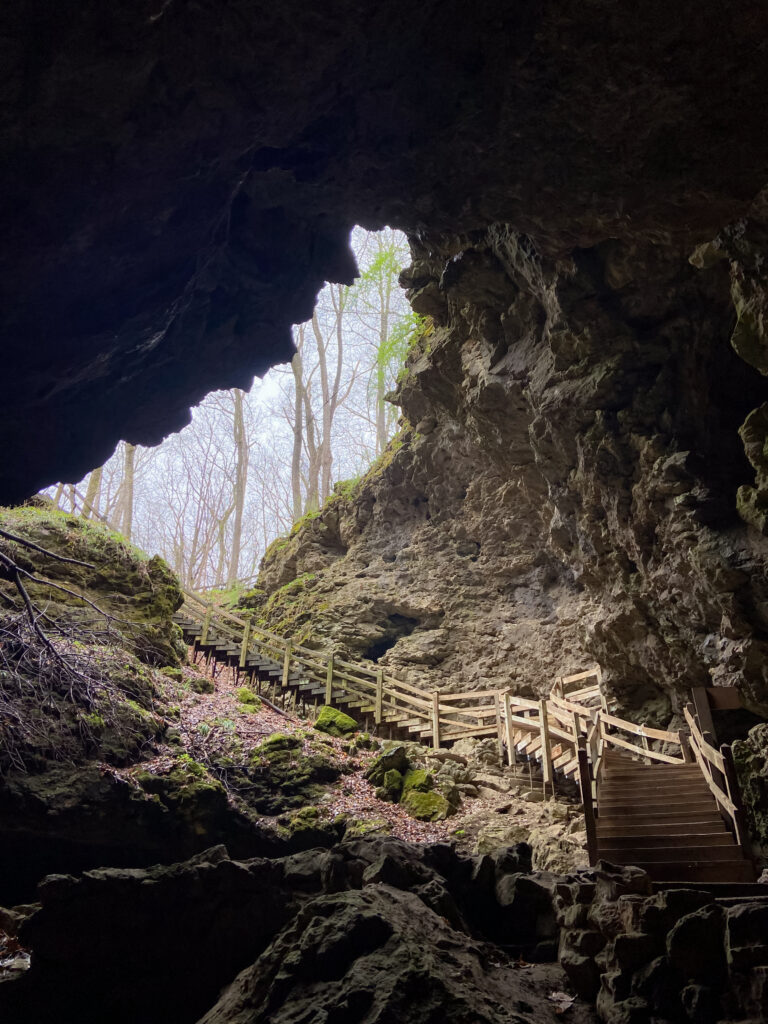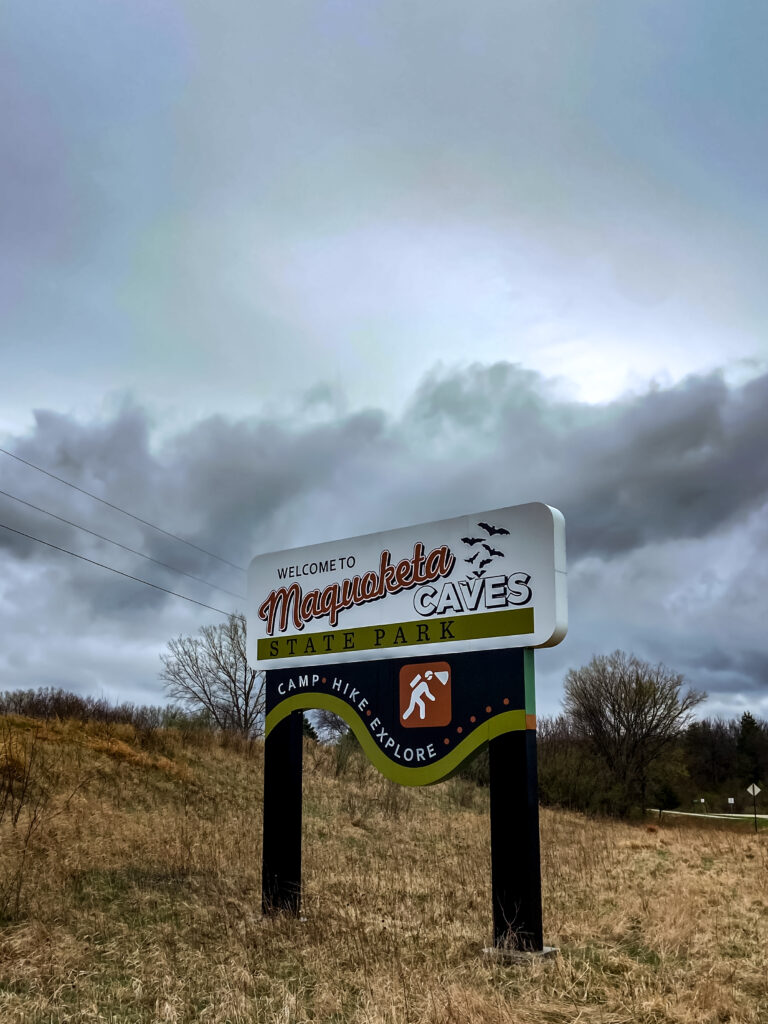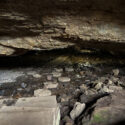Corn mazes, tailgating and baking: Those are all Midwest activities. Cave exploring: not so much. Yet, the Midwest has a thriving caving culture with destinations from South Dakota (Wind Cave National Park) to Missouri (Meramac Caves).
In Iowa, cavers make their way to Maquoketa Caves State Park, located 90 minutes northeast of Iowa City in the Hawkeye state’s hillcountry. Common visitors to the caves range from summer camp kids to members of the National Speleological Society (NSS).
I wanted to experience caving firsthand. Did I have any experience? No, but I did have an eager attitude to see what these caves were all about. I’ve always enjoyed mixing a bit of adventure with nature, from serene scenic hikes to daring white water rafting rides. The idea of exploring a cave was a new one I wanted to check off my list.
Ed Klausner, a member of both the NSS and the Iowa Grotto, a statewide caving club, was my guide during my trip. He got his start caving in Iowa 25 years ago. He’s since explored caves everywhere from California to Tennessee. His caving experiences have differed from state to state.
“The deep caves are in Tennessee, Alabama and Georgia,” Klausner said. “Beautiful caves in New Mexico, lava tubes in California and Idaho. Most Iowa caves are small, with a few exceptions, such as Coldwater Cave near Decorah.”
Though most people may not think of the Midwest for caving. Klausner said the experience here in the Midwest is just as spectacular as going to any other cave in any other state.

Preparation for the Caves
When researching for my trip, I found that caving is more than just a fun activity, it comes with responsibilities.
“Being a responsible caver involves planning carefully, being properly trained and equipped, moving through the cave safely with minimum impact and returning on time,” the NSS said in its guide to responsible caving.
In preparation for my trip, I decided to learn more about caving so I knew exactly what I was getting myself into. The NSS guidebook described a variety of different elements and challenges that cavers could run into on an adventure such as different-sized passages — some that could require crawling — or flash flooding. The Maquoketa Caves had a special element: the potential for bats.
In order to not be surprised by the unexpected, and be a responsible caver, I looked into the trails I was fascinated by and made sure someone of my skill level would be able to have an enjoyable experience.
I asked Klausner for information and I was in good company — Klausner also had his start with caving at the Maquoketa Caves. It’s where his love of finding these underground passages began.
“The Maquoketa Caves are a great place for people interested in caves,” Klausner said. “It is a good place to start caving.”
When it comes to preparation for caving there were two main things Klausner highlighted. First, the weather on the day you are going underground is key. A rainy day could cause flooding, making traveling through the caves dangerous. Second, Klausner gave me his list of must-have supplies to bring along.
“A helmet with a mounted light, two other independent sources of light, good boots, one or two other people with you, an emergency kit and tell someone where you’re going and when you’ll be back,” Klausner said.
His number one tip for those just starting their caving journey?
“Join a grotto and get some experience from other cavers,” Klausner said.

My Spelunking Adventure
When I first arrived at the caves, I couldn’t wait to get started on the trails and see what the day had in store for me. It was the opening weekend for the caves this spring, and I was excited to join my fellow cavers who were already there. In all honesty, my adventure began by going against one of Klausner’s tips — I was caving on a rainy day.
The rain and overhead clouds on the drive to the caves seemed concerning. So, once I arrived, I assessed the situation. Conditions did not seem too bad — it was barely sprinkling and I saw no signs of serious flooding, so I proceeded with caution.
I decided to take the Dance Hall Trail and Cave route. Between the major signs pointing me that way and other cavers taking it on, I thought it was my best bet to go there, too. As I approached the entrance, there were several warning signs about the bats I might encounter on my adventure. I tucked that knowledge away for later, hoping it wouldn’t come up. Once I finally made my way down to the entrance of the cave, there was a gap so low I had to crawl to enter — an authentic caving experience.
Luckily, the gap of the entrance was the smallest space I had to squeeze myself through, though the rest of the cave put me through some mild contortions. I was either waddling on my knees or, if I was lucky, ducking slightly but at least walking on my feet. Once I was deeper in the cave, I expected to be fully immersed in nature. Instead, I saw signs of man. I expected to purely rely on my flashlight to navigate, but once I was past the point of any natural lighting, there were some dim lighting fixtures installed. This lit up my path just enough to navigate my way through.
I also didn’t expect to be wading in water as much as I was. I was feeling more like a duck. Although it was probably past ankle-deep at most, I was happy I wore water shoes as I hopped from rock to rock.
When I wasn’t trying to avoid water or the potential threat of bats, I really enjoyed the beauty the caves had to offer. There were huge boulders and rock spirals, and the wet environment made everything glisten in the dim lighting. Early on, I was the only caver in the cave. I got to enjoy the sounds of water droplets from the spirals hitting the pools of water below, and, of course, experimenting with my own echo in the cave.
Once I reached the end of the cave, I was relieved to see a towering staircase back to the top. And while I was relieved I wouldn’t have to squeeze myself through ay more low-hanging gaps, I loved my first caving adventure.
When I asked Klausner where his favorite place to go caving is, he told me, “Wherever I’m currently caving.” My inner caver would have to agree.

